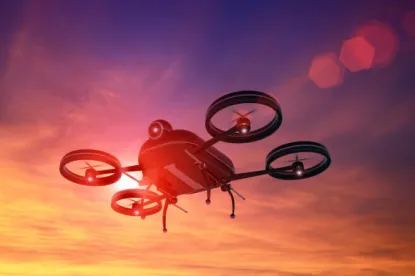On June 22, 2016, the Department of Transportation’s Federal Aviation Administration (“FAA”) released new rules for small commercial drones. Part 107 governs the use of small unmanned aircraft systems, “UAS” or “drones.” Public Law 112-95, Section 331(8) defines UAS as “an aircraft that is operated without the possibility of direct human intervention from within or on the aircraft.” Drones can range from radio-controlled, fixed-wing aircraft to helicopters or rotorcraft models (quadcopters), flown for recreation or commercial purposes. Part 107 does not apply to “model aircraft” that satisfy all of the criteria specified in section 336 of Public Law 112-95. Congress defines “model aircrafts” as an unmanned aircraft that is: 1) capable of sustained flight in the atmosphere; 2) flown within visual line-of-sight of the person operating it; and 3) flown for hobby or recreational purposes.
 Previously, commercial entities flying drones needed a pilot’s license. Now businesses and government agencies can use drones without having to go through the onerous process of obtaining a pilot’s license. The drone operator need only get a remote pilot certificate, obtained by passing an aeronautical knowledge test, or by holding a non-student Part 61 pilot certificate. Those qualifying under the non-student Part 61 pilot certificate must have completed a flight review in the previous 24 months and must take an online training course provided by the FAA. The Transportation Security Administration will then conduct a security background check of all remote pilot applications prior to issuing the certificate.
Previously, commercial entities flying drones needed a pilot’s license. Now businesses and government agencies can use drones without having to go through the onerous process of obtaining a pilot’s license. The drone operator need only get a remote pilot certificate, obtained by passing an aeronautical knowledge test, or by holding a non-student Part 61 pilot certificate. Those qualifying under the non-student Part 61 pilot certificate must have completed a flight review in the previous 24 months and must take an online training course provided by the FAA. The Transportation Security Administration will then conduct a security background check of all remote pilot applications prior to issuing the certificate.
The new rules will require drones to fly only during daylight hours or twilight if the drone has anti-collision lights, stay below 400 ft., weight no more than 55 pounds, and limit the top speed to 100 miles per hour. The rule’s provisions also require pilots to keep the drones within visual line of sight. Small drones can fly in rural areas without FAA approval, however operators still have to work with air traffic control if planning on flying a mission over any crowded airspace or heavily populated areas. Additionally, operators can fly commercial drones without the certificate if they are supervised by someone who has been certified. This leads to the possibility for multiple drones to be operated by teams with only a single certified operator to oversee.
There will be a process to waive some restrictions if an operator can prove the proposed flight will be conducted safely under a waiver. The FAA will make an online portal available to apply for these waivers.
With regards to safety, operators are responsible for ensuring the drone is safe prior to flight, however, the FAA is not going to require the drones to comply with current agency airworthiness standards or aircraft certification. The operator need only to perform a preflight visual and operations check of the drone to ensure the safety-pertinent systems and communications link between the control station and the drone are functioning.
So what about privacy? The new rules do not address privacy issues in the use of drones. The FAA does not regulate how drones gather data on people or property. However, the FAA is acting to address privacy concerns and encourages all pilots to check local and state laws before gathering information through video or photography.
Industries such as real estate photography, farming, cell towers inspection, land surveying, and construction will especially benefit from the new rules. The FAA states these new operational rules will “work to harness new innovations safely, to spur job growth, advance critical scientific research and save lives.” Interestingly, package delivery and other long-distance uses of drones are not included in the new rules.
It is important to note these new rules do not cover autonomous flight, but rather are aimed at unmanned drones operated by someone either with the requisite certificate, or supervised by someone holding the certificate, conducting non-hobbyist operations. There are no regulations regarding autonomous flight from the FAA. Because operating drones has now become an easier process, smaller businesses will be able to take advantage of the technology. But the restrictions, including keeping the drones within the operator’s line of sight, and the omission of regulations regarding autonomous flight mean companies planning on using drones for mass commercial use (i.e. package delivery) will have to wait.
The new rules will take effect on August 29, 2016.




 />i
/>i
